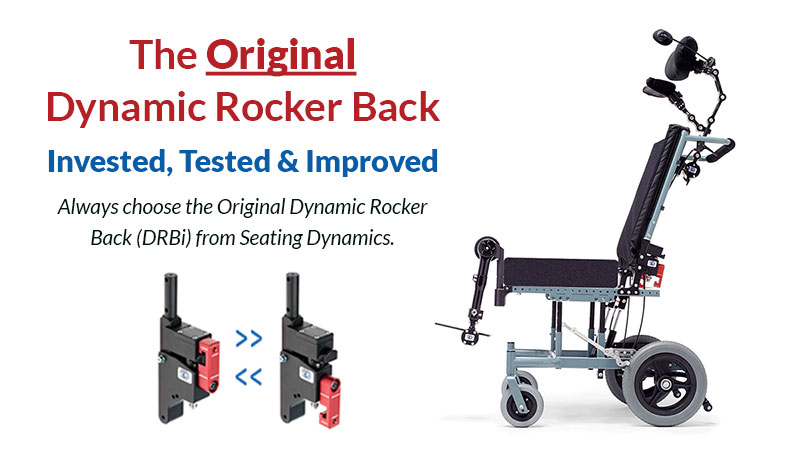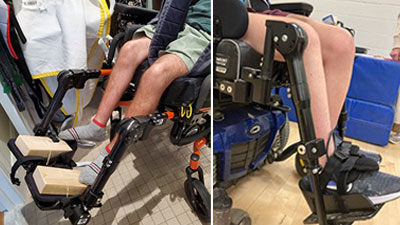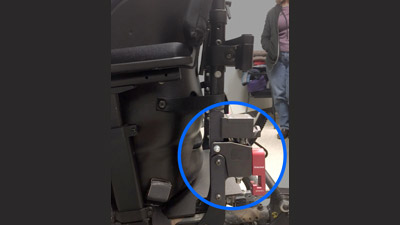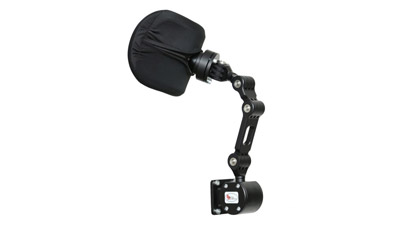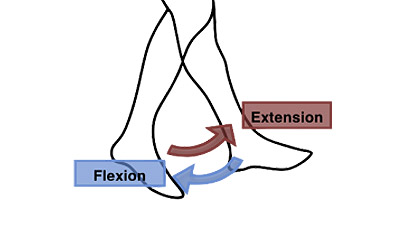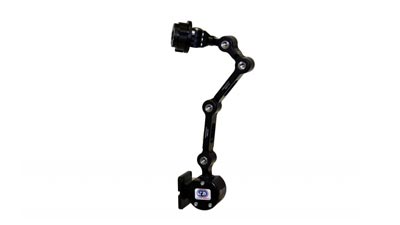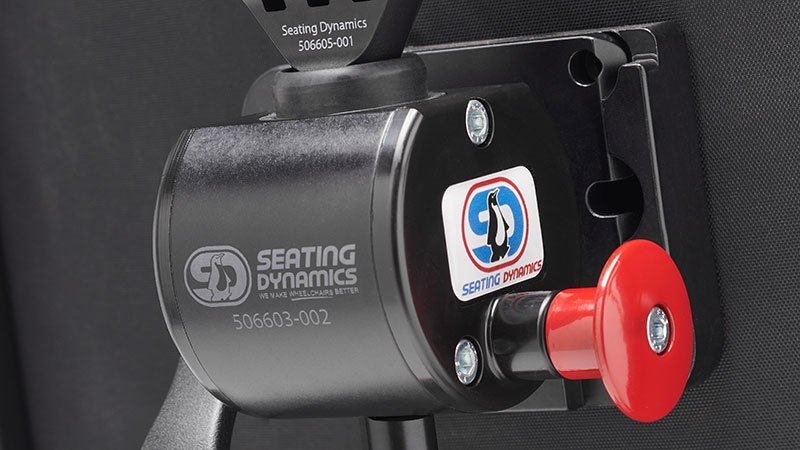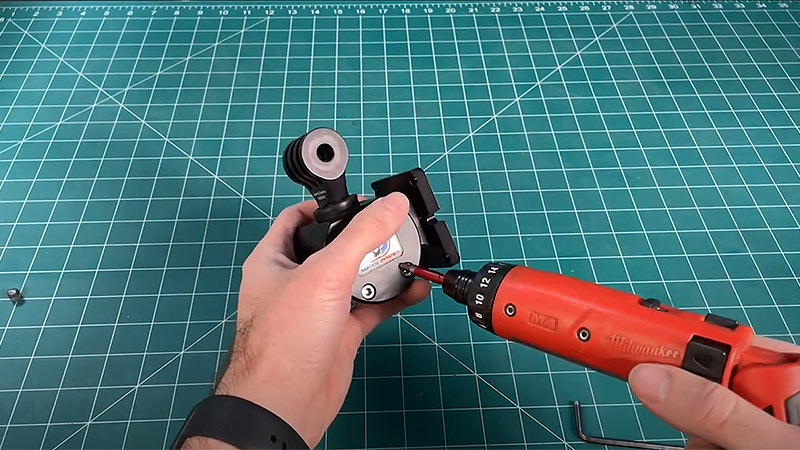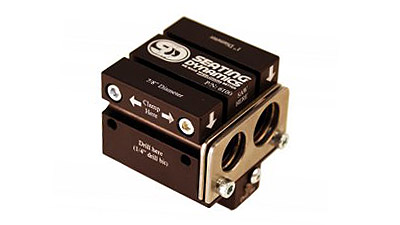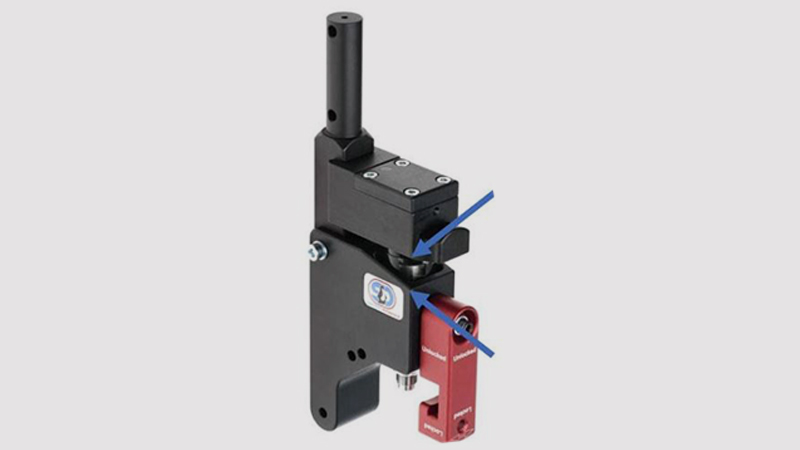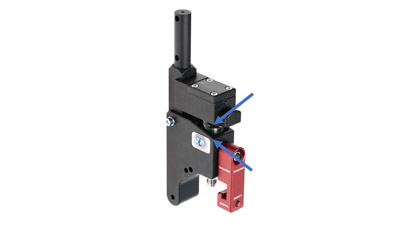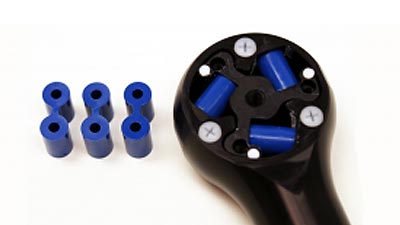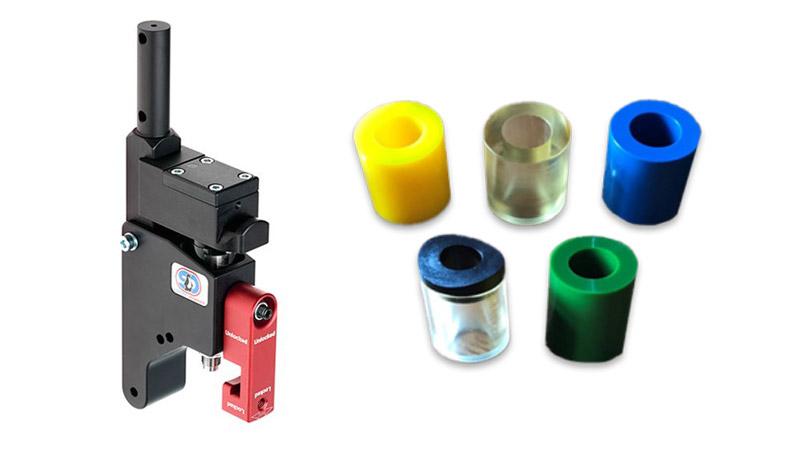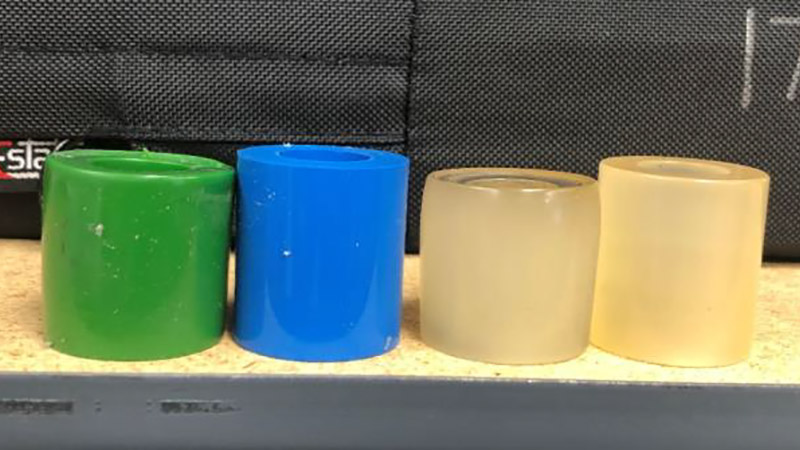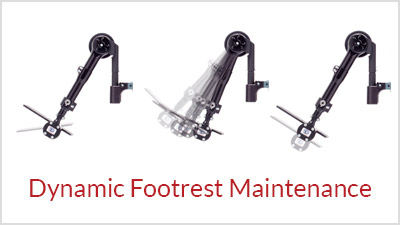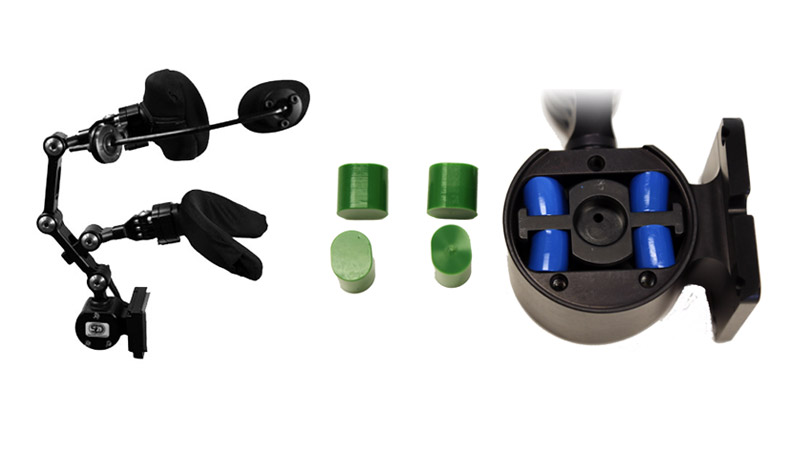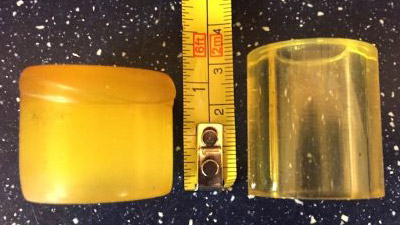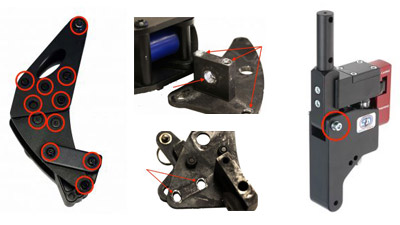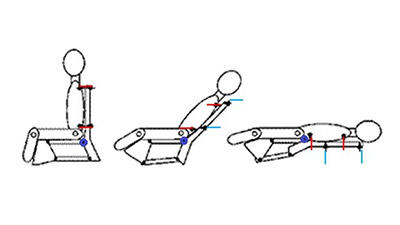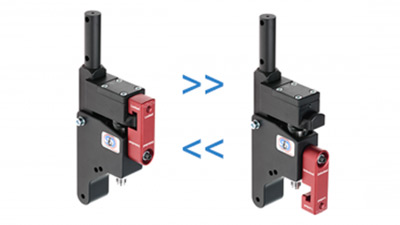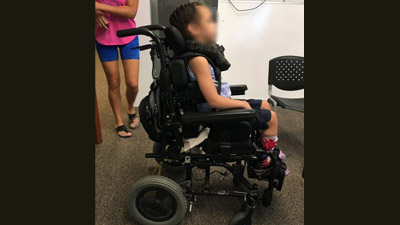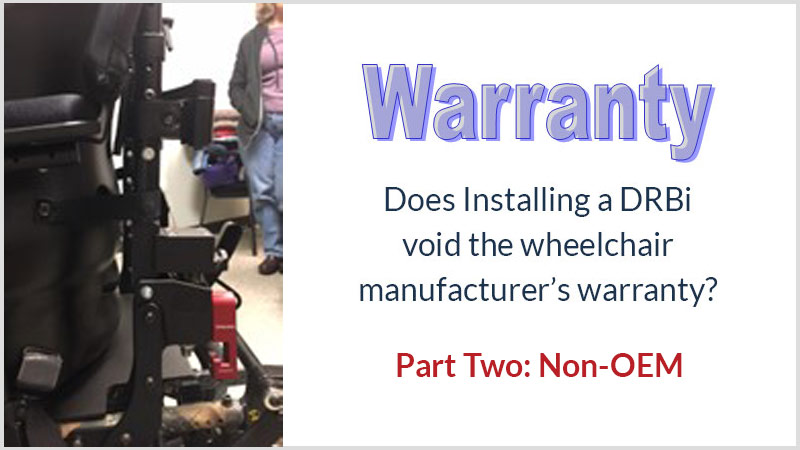Dynamic Seating Design
Ensure Your Dynamic Back is the Original, Genuine Seating Dynamics Product
Another manufacturer offers a nearly identical version of an old model of the original Dynamic Rocker Back (DRBi) from Seating Dynamics. Make sure you know what your product is.
Newly Designed Dynamic Footrests! It’s all about the Pivot Point!
Dynamic Seating components are designed to move with a client. A great deal of design goes into these components to ensure the product responds to client forces and maintains client position.
Allowing Movement Of The Pelvis Without Loss Of Position
Seating Dynamics explains how dynamic pelvic components allow clients to tilt their pelvis forward and return upright to a neutral position.
Dynamic Head Supports – the importance of design in meeting client goals
In our last blog, we discussed clinical indicators and contra-indicators to allowing movement into neck extension using a dynamic head support. Dynamic movement in this area can protect the head support hardware from damage, limit client injury, and reduce overall extensor tone. How does design facilitate these goals?
Dynamic Footrest Hangers – It’s All In The Design
Allowing movement at the knee is more complicated than it sounds. When a client extends at the knee, this movement is not just in one plane. In other words, the foot doesn’t simply slide forward. The foot follows an arc, forward and upward.
Maintaining Head Support Position – let’s do the math!
I see a lot of clients for head positioning in their wheelchair seating system. This requires a thorough seating assessment, as well as providing the best product. Even if I choose what I believe to be the very best head support for a client, I find that maintaining the position of that support is a challenge. I continually find that the hardware has moved, often resulting in a sub-optimal head position for the client.
Dynamic Seating Installation
Lock Out Feature | Dynamic Head Support for Wheelchairs
The Dynamic Head Support for wheelchairs can now be locked-out to limit head movement when desired, such as during transportation. Learn more about this helpful feature.
Tech Tip: Add Lock Out to Existing Dynamic Head Support
In this video: JJ demonstrates how to add the lock out feature to an existing single-axis Dynamic Head Support.
Back Cane Saw & Drill Jig Simplifies DRBi Installation
Seating Dynamics Dynamic Rocker Back interface (DRBi) provides movement in response to client forces. These forces are stored and then return the client to a neutral starting position. This Dynamic Back has many clinical applications, but first it must be correctly mounted to a wheelchair base.
Determining Resistance
The Dynamic Seating Resistance Relationship: too much, too little, or just right!
Resistance to force allows the dynamic seating component to return to its starting position. If it is too low or too high, the component will not work effectively.
How Much is too Much? Choosing Resistance.
The Dynamic Rocker Back Interface (DRBi) moves in response to client force as two elastomers are compressed. The energy stored in the elastomers helps the client to return to an upright starting position. These elastomers can be switched to change the level of resistance.
Determining Resistance: Dynamic Footrests – Update
Seating Dynamics Dynamic Footrests can move in up to 3 directions. First, the footrests can telescope, allowing movement downward. Second, the footrests can elevate, allowing the knee to extend and the foot to move forward. Third, the footplate can move into plantar and dorsi flexion, allowing ankle movement.
Dynamic Seating Maintenance
Dynamic Rocker Back interface – Factors which contribute to elastomer wear Part 1
How do the Elastomers in the Dynamic Rocker Back interface work? Let’s start with Seating Dynamics DRBi elastomer basics.
Dynamic Rocker Back Interface – Indicators that the elastomers need to be changed Part 2
The elastomers in a Dynamic Rocker Back interface (DRBi) are designed to absorb client forces, store force as energy, and use that energy to return the client to upright sitting.
Maintenance Time! The Dynamic Footrests
Dynamic Seating uses elastomers, springs, and/or hydraulics to absorb force, store energy, and return the client to a starting position. Instead of the wheelchair frame breaking, the dynamic component will wear and require replacement.
Does the Dynamic Head Support Hardware Require Maintenance?
In prior blogs, we addressed Dynamic Rocker Back interface maintenance and Dynamic Footrest maintenance. Today, we turn our attention to the Seating Dynamics Dynamic Head Support Hardware.
Tech Tip: Add Lock Out to Existing Dynamic Head Support
In this video: JJ demonstrates how to add the lock out feature to an existing single-axis Dynamic Head Support.
When An Elastomer Goes Flat… The Story of J and the Flattened Elastomers
This is the story of J and the flattened elastomers. J is a young man with an incredibly strong extensor tone pattern that usually initiates in his hips. He uses a Seating Dynamics Dynamic Rocker Back to absorb these forces. He resides in a long term care facility and has multiple caregivers who have known him for many years.
Dynamic Seating and Durability
Does the Dynamic Head Support Hardware Require Maintenance?
In prior blogs, we addressed Dynamic Rocker Back interface maintenance and Dynamic Footrest maintenance. Today, we turn our attention to the Seating Dynamics Dynamic Head Support Hardware.
Clinician Interview: Kaye Donec – diffusing tone, preventing breakage, and providing movement
Meet Kaye Donec, former Individualized Services Team Leader of the Adult Therapy Program at the Disability Services Department of Communities in Western Australia, and learn how she used Dynamic Seating in her career.
Will my client break the Dynamic Seating?
Dynamic Seating is often used to prevent equipment breakage, specifically the wheelchair frame and seating system. The Dynamic components absorb strong, repeated, sudden, and/or sustained forces, hence protecting vulnerable areas of the seating and mobility base. This was addressed in two prior Blogs (Dynamic Seating to Prevent Equipment Breakage, part 1 and part 2). But what about the Dynamic Components themselves? Just how durable are these?
Dynamic Seating: a cost benefit analysis
Whenever I recommend complex rehab equipment for a client, I need to be aware of the cost of my recommendations. Why? One reason is that my documentation must often include why something less costly will not meet the client’s needs.
Dynamic Seating and Shear
Does Dynamic Seating Increase Shear?
In wheelchair seating, shear occurs when the client’s body tissues move in relation to the surfaces of the seating system. This can occur during transfers, movement within the seating system, or movement of the seating system or wheelchair frame.
Wheelchair Seating Surfaces, Cushions & Dynamic Seating
Can a Dynamic Back be used with any type of seat? Does the movement allowed by this component limit what seating surface can be used? This is an important consideration. A seat or cushion is typically designed to support the pelvis and provide pressure distribution when the client is in a static position. Dynamic seating gets things moving!
Oil and Water – Do Molded Backs and Dynamic Seating Mix?
Oil and water don’t mix well and we often assume that molded seating and movement don’t mix either. Why? Well, a molded seat or back provides very intimate contact with the client’s body. If, for example, the seat to back angle changes, this can change the alignment of the client in relation to these intimate contours.
Warranty
FAQ: Does Installing a DRBi void the wheelchair manufacturer’s warranty? Part one: OEM
When installing a Dynamic Rocker Back interface (DRBi) on a manual or power wheelchair, the back canes must be cut to accommodate the height of the dynamic hardware. A common concern from suppliers is whether or not this voids the warranty on the wheelchair frame.
FAQ: Does Installing a DRBi void the wheelchair manufacturer’s warranty? Part two: non-OEM
When installing a Dynamic Rocker Back interface (DRBi) on a manual or power wheelchair, the back canes must be cut to accommodate the height of the dynamic hardware. A common concern from suppliers is whether or not this voids the warranty on the wheelchair frame.

